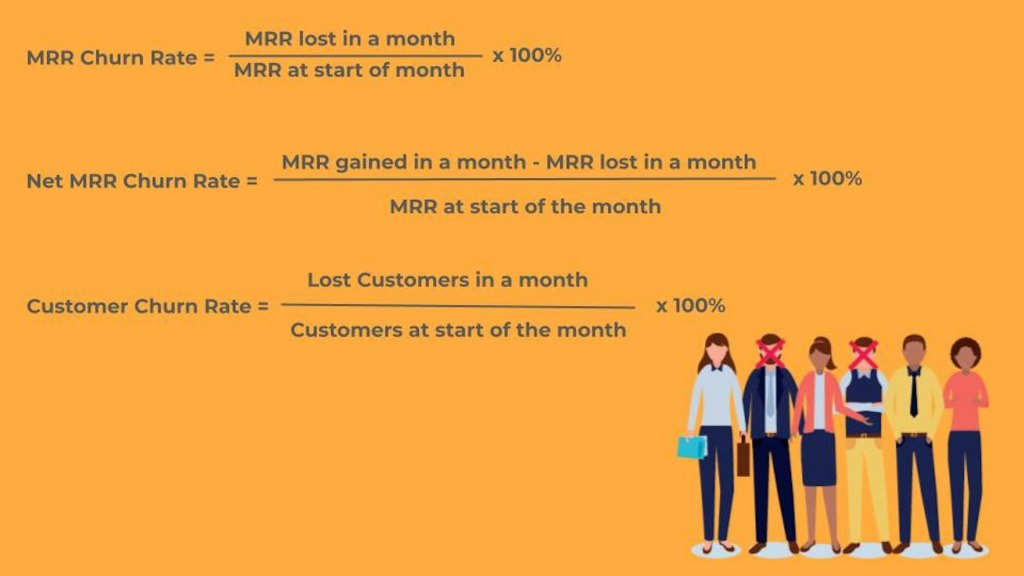The churn rate is the total percentage of customers that join up and subsequently leave within a specific period. The churn rate is undesirable since it indicates that you’re losing consumers.
Customer churn rates may be divided into two categories: voluntary and involuntary. People who unsubscribe for their reasons, such as being dissatisfied with the service or no longer requiring it, are referred to as “voluntary churn.” Involuntary churn can occur due to problems like payment failure that cannot be attributed to a customer intentionally canceling.
Since one of your aims in business is to keep your customers happy so that they don’t churn out at the end of the day, the first step is to figure out your total churn rate. After that, the number of clients you lose each month. You may also use the following formula for your customer turnover rate estimate to make things even more straightforward:
Total consumers/customers who departed multiplied by 100.
In other words, a churn rate of 5% means that out of every 1,000 new customers you acquire, 50 will cancel their subscription. Because 50 cancellations divided by 1000 customers equals 0.05, or 5%.
How does the churn rate help your business?
Calculating the churn rate has many uses:
- Being an indicator of a company’s health and long-term prospects
- To determine whether modifications hurt client retention.
- In determining the lifetime value of a customer, another key metric.
- To estimate the amount of future revenue for business valuations.
Calculating Revenue (MRR) Churn Rate
The amount of monthly recurring revenue lost in a given month should be divided by all of your monthly recurring revenue (MRR) at the beginning of the month, make sure to exclude any upgrades or additional money from current customers that was received in a month. This will give the percentage of revenue churned. Don’t add new sales because you’re just interested in how much revenue you lost from pre-existing customers. If you add in upgrades and current customers before dividing by the starting MRR, you get the Net MRR Churn rate, another useful metric.

Building a Churn Rate Report
Since Salesforce doesn’t have a native solution for subscription metrics like churn rate, the report(s) you build will depend on how you store the data, and it might take more than one report to calculate your churn.
To build the report you will need to build a report with the following information:
- The total MRR at the beginning of the month
- The amount of MRR that churned due to cancellations or payment issues in that month
As an example, let’s say you are tracking your customers using Accounts, Opportunities, and Products. Since Salesforce doesn’t have a native solution for calculating MRR and tracking cancellations, let’s assume there is a custom field for MRR on the opportunities and you create cancellation Opportunities in Salesforce when a customer cancels or downgrades certain products.
In this scenario, you just create two reports:
- One report has your total MRR, this is just a sum of MRR on all closed opportunities (new customers and add-ons minus cancellations) where the close date is prior to the beginning of the month.
- The other report is the total MRR related to cancellations or downgrades for the month.
Then, just divide the lost MRR by the starting MRR for the month and you have your revenue churn. You can do this on a monthly basis by setting up a Report Subscription to these two reports or having it sent to the right person using a tool like Report Sender.
This is just one example and there are a number of ways and different tools to help with calculating these metrics. But if your business depends on recurring revenue, you can’t afford to calculate these metrics.
Topics that you might be interested in:
What operational metrics should you measure?
10 CRM metrics you should measure
If you look for the FREE apps that will help you better operate in Salesforce, here are apps developed for Salesforce by CloudAsnwers:
Report Sender – is the go-to application to download and share Salesforce reports with SF and non-SF users.
Potential Duplicates – an easy to use component that lets you see potential duplicates and merge them
About CloudAnswers
Salesforce apps, powerful components, custom development, and consulting. Our experienced team helps you to create and modify workflow processes in salesforce.

